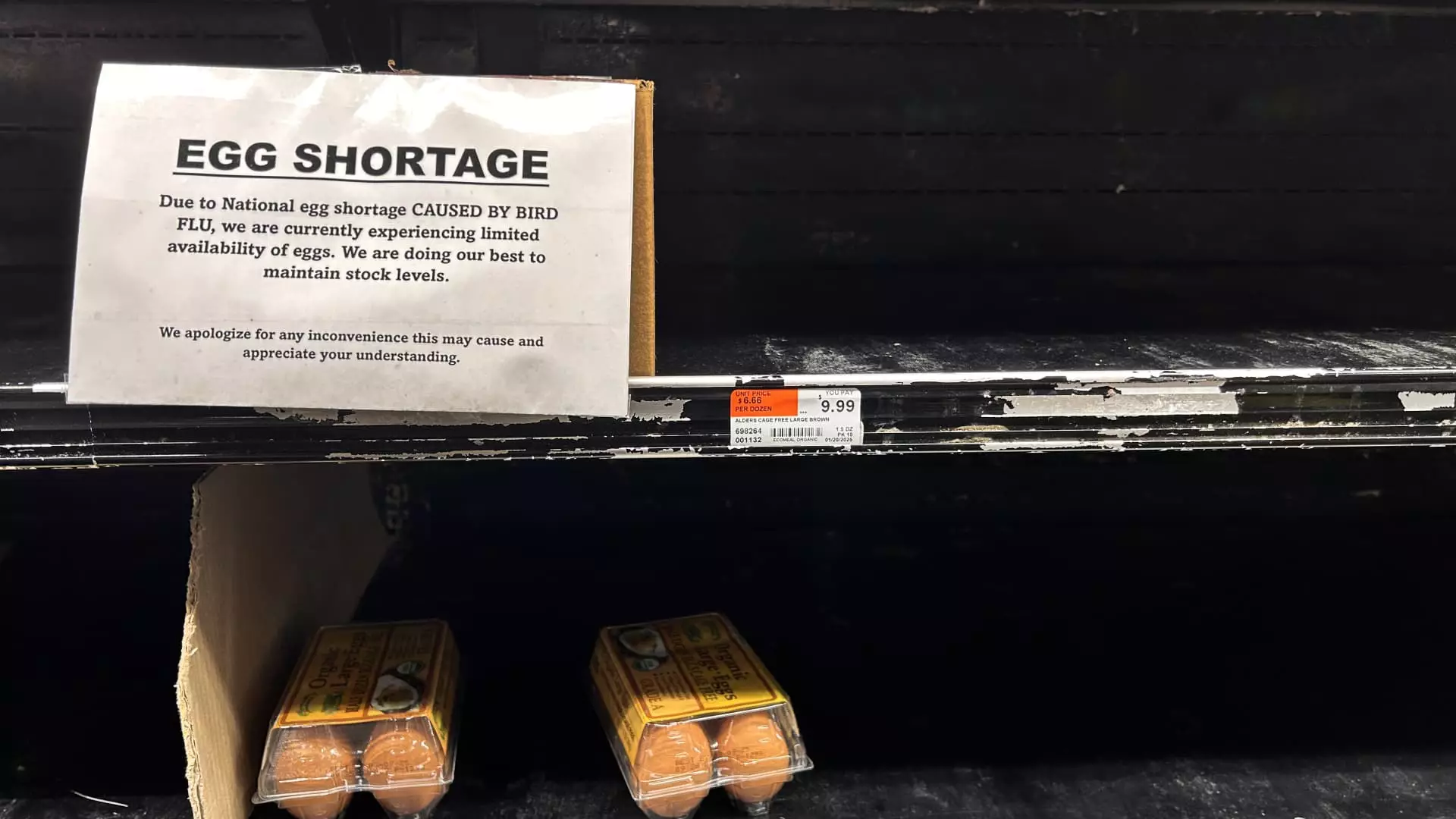In a shocking turn of events, wholesale egg prices in the U.S. have soared to record levels, creating a ripple effect that is likely to be felt by consumers nationwide. As of last Friday, average wholesale prices for large, white shell eggs reached a staggering $8 per dozen, eclipsing the previous high of $5.46 set in December 2022 during the holiday rush. This sudden spike is driven primarily by a severe outbreak of avian influenza, commonly referred to as bird flu, which has wreaked havoc on egg-producing flocks across the country.
Market experts, including analyst Ryan Hojnowski from Expana, highlight the delayed reaction in retail prices that typically follows wholesale increases. “There’s a lag of several weeks before these hikes translate to local grocery stores,” explains Hojnowski. As a result, consumers can expect to face sticker shock at their favorite markets, with retailers like Trader Joe’s and Costco already imposing purchasing limits to manage supply amid soaring costs.
This surge in egg prices comes at a time when inflation rates for other goods have shown signs of easing, further intensifying consumer anxiety about food costs. A significant touchpoint is a report from the U.S. Bureau of Labor Statistics indicating that consumers paid approximately $4.15 for a dozen large, grade A eggs in December 2023. While this price has not yet eclipsed the record high of $4.82 from January 2023, it represents a 65% increase from the more modest price of $2.51 just a year prior.
Amidst this climate of rising costs, restaurants are also feeling the pressure. Notably, Waffle House began charging an additional 50 cents per egg on orders, while local establishments like Storm’s Drive-In and Kroll’s Diner have adjusted prices for egg dishes. As food establishments struggle to maintain profit margins, consumers are left to shoulder the burden of these rising prices.
At the heart of this crisis lies the highly pathogenic avian influenza. This lethal strain of bird flu has forced farmers to cull entire flocks upon detection of the disease, resulting in the loss of over 40 million egg-laying chickens, accounting for nearly 13% of the U.S. total. Experts warn that the situation has only worsened as the outbreak has continued into 2025, with millions more chickens perishing in a short span.
Economic consultant Amy Smith notes that current inventories of shell eggs are about 15% to 16% below the five-year average, exacerbating the supply-demand imbalance. The seasonal peak demand during the winter holidays, when consumers traditionally purchase more eggs for baking, further complicates the situation. Smith aptly characterizes this crisis as unprecedented, remarking, “Wholesale prices are triple and quadruple what they were a year ago.”
With wholesale prices on the rise, the repercussions on retail prices vary significantly between national chains and independent grocers. Large retailers, like Walmart and Aldi, often have the capacity to absorb some of these price increases, thanks to their mechanisms for managing supply, such as fixed-price contracts or broader profit margins across their product ranges. In contrast, smaller retailers may lack the same resilience and thus feel compelled to adjust their prices more rapidly in response to wholesale fluctuations.
Hojnowski’s insight into the operational differences between large and small retailers provides a glimpse into why consumers may experience disparate pricing scenarios across different shopping venues. As the bird flu crisis continues to impact the egg supply, it’s clear that retail dynamics will also evolve based on individual business capabilities and market strategies.
Unfortunately for consumers, the outlook remains grim as the threat of bird flu looms large over the poultry industry. With over 22 million egg-laying chickens reportedly lost to the virus just in the first quarter of 2025, supply constraints will likely persist. In stark contrast, chickens raised for meat—broilers—have experienced considerably fewer losses, with only 7.5 million casualties due to bird flu as of now.
The ongoing crisis serves as a stark reminder of the interconnectedness of agricultural supply chains and external shocks, such as disease outbreaks. The drastic increase in egg prices over recent years—170% from December 2019 to December 2024—highlights an industry grappling not only with production challenges but with significant consumer impact and market volatility.
As the nation grapples with soaring egg prices, consumers must prepare for a potential new normal in their grocery bills. Understanding the underlying causes of this price surge, alongside the dynamics at play within the retail landscape, is essential for navigating the challenges that lie ahead. Whether prices stabilize or continue to rise, one thing is certain: the bird flu outbreak has transformed the egg market into a volatile sector that warrants close attention from consumers and analysts alike.

